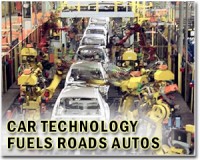 |
Seoul (AFP) Aug 3, 2009 Thousands of riot police Monday strengthened their siege of a troubled South Korean auto firm, spraying liquid tear gas from a helicopter, after talks to end a prolonged occupation by strikers collapsed. Television showed police with helmets and shields moving closer to a paint shop at the Ssangyong Motor plant in Pyeongtaek, 70 kilometres (43 miles) south of Seoul. On Sunday three days of talks between managers and union leaders broke down, raising concerns the debt-stricken company may go bankrupt. "Today police strengthened their force in and around the plant, from 3,000 to 4,000," company spokesman Cha Ki-Ung told AFP. Hundreds of workers -- armed with metal pipes, powerful slingshots and inflammable paint thinner -- have occupied the factory since May 21 in protest at job cuts designed to save the Chinese-invested company. Police moved in on July 20 and took over some buildings, but strikers have held out in a barricaded paint shop stacked with inflammable materials. There have been no hand-to-hand clashes but dozens of people have been injured as strikers fired nuts and bolts from the slingshots. Management has cut off water and power supplies to the paint shop. On Monday, workers hurled a series of firebombs when police moved closer and tried to remove barricades. They also kept up a hail of nuts and bolts. The firm in February secured court protection from creditors after China's Shanghai Automotive Industry gave up management control. Court-appointed managers have since struggled to turn it around through job cuts and cost savings. The programme calls for the sacking of 2,646 workers or 36 percent of the workforce. About 1,670 of these have taken voluntary retirement but the others began an occupation of the plant. As of early Monday fewer than 600 unionists were still holed up inside the paint shop, Cha said, after about 100 more of them gave up. "There will be more deserters who are tired and do not want the plant to be closed," he said. Creditors have threatened to push for bankruptcy against the loss-making plant. But the union has refused to give up its demands for no layoffs and no lawsuits against it for damages. The standoff has cost about 300 billion won (244 million dollars) in lost revenue. The country's smallest auto firm specialises in sport-utility vehicles and luxury sedans. Surveys show South Korea's reputation for workplace strife has been one factor in discouraging foreign investment. But several individual unions have recently quit the militant Korean Confederation of Trade Unions. Last month unionised members of telecom giant KT voted to quit the umbrella body, saying it is not fulfilling its original mission amid "excessive political and internal struggles." In March workers at the troubled local unit of US auto giant General Motors agreed on a cut in welfare benefits to help reduce costs. The Ssangyong standoff "has now become a political issue, no longer a labour issue," said Kang Won-Taek, a political science professor at Seoul's Soongsil University. Kang said the conservative government would at one time have moved quickly to end the occupation. But he said it was now very cautious, following an operation to evict illegal tenants from a Seoul redevelopment in January which ended in the death of an officer and four protesters. "If such a thing is repeated, it would be an added political burden for the current government to grapple with," Kang told AFP. Share This Article With Planet Earth
Related Links Car Technology at SpaceMart.com
 Nissan unveils 'Leaf' electric car
Nissan unveils 'Leaf' electric carYokohama, Japan (AFP) Aug 2, 2009 Nissan unveiled Sunday its first all electric car, the Leaf, vowing to open a new chapter for the troubled auto industry and take a lead over its bigger rivals in zero emission vehicles. The mid-sized hatchback, which will go on sale in late 2010 in Japan, the United States, and Europe, represents a bold bet by Nissan that hybrids are merely a passing fad on the road to pure electric vehicle ... read more |
|
| The content herein, unless otherwise known to be public domain, are Copyright 1995-2009 - SpaceDaily. AFP and UPI Wire Stories are copyright Agence France-Presse and United Press International. ESA Portal Reports are copyright European Space Agency. All NASA sourced material is public domain. Additional copyrights may apply in whole or part to other bona fide parties. Advertising does not imply endorsement,agreement or approval of any opinions, statements or information provided by SpaceDaily on any Web page published or hosted by SpaceDaily. Privacy Statement |